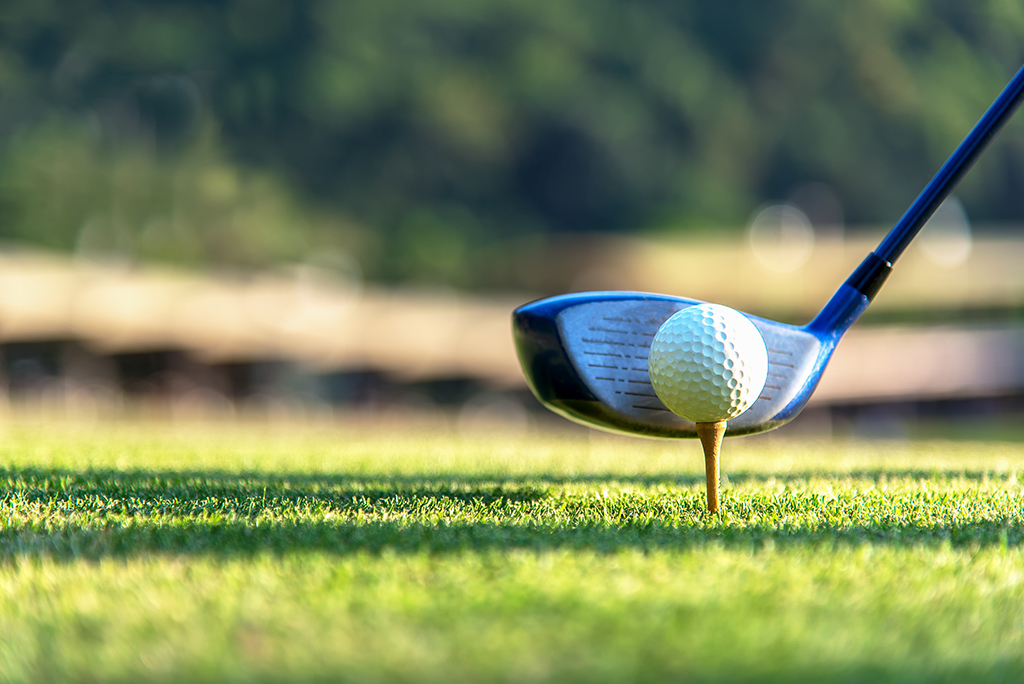
Whether you’re a golf pro or a complete novice, you never stop wanting to improve your game. One of the most common aims for amateur golfers is to be able to hit the ball further, and stats show that increasing the distance by 20 yards can result in losing 4 – 6 strokes off your game.
While we’ve accepted that we’re never going to be in the same league as Rory McIlroy when it comes to how far we can hit the ball, here are 7 tips for how to hit a golf ball further, so you can gain a few extra yards.
1. Stance
A wide golf stance is a good foundation for speed and power. Try to keep your hips loose, with 60% of your weight on your back leg at the peak of your downswing, and 90% on the front leg when you get to the bottom.
2. Ball Position
Move the ball forward so that you’re playing it at the inside of your lead foot, this will help get it on the right ball flight. This isn’t an exact science, so it’s worth trying out different positions to find what works better for you.

3. Range Of Motion
You can put more power in your backswing by turning your hips so that your back is facing the target, even if this means your left heel is starting to raise. Then extend your arms to really drive it through.
4. Core
Maintaining stability throughout the swing comes from your core, not just your shoulders and arms. Strengthening the abdominal and oblique muscles will help generate more power, as well as help prevent any injuries, particularly with your lower back. Yoga and Pilates are good for core strength, but you don’t need to go to classes or a gym, you can do exercises at home, for example, learning how to do a plank will do the trick.
5. Clubhead Speed
This is crucial to determining how far the ball travels – the faster the clubhead speed, the further the ball will go. A few things can affect the speed, including swing technique, the type of club you use, and physical fitness. You can maximise the speed by making sure you warm up properly and by paying attention to things such as grip technique.

6. Loft
Decreasing the loft can help you hit a golf ball further too; you could try pushing the shaft forward with the handle as far ahead of the clubface as possible, which will decrease the angle of the loft. This will take practice, so it might help to try it with a half swing at first to help with the precision.
Adjustable drivers are available, which allow for longer distance off the tee.
7. Clubface
Something else you could try is making sure you hit the ball with the centre of the clubface, this is something else that needs practice and the key with this is to slow things down. While it’s true that the faster you hit the ball the further it will go, slowing down is also an important part; it enables you to perfect your technique and make sure your movements are smooth and controlled.
As with most things that golfers want to improve, the key to getting that distance is making sure you get the basics right first, and using everything you’ve learnt so that everything works together to set the ball up for that perfect, and long, shot.
Whether you’re a pro or a weekend warrior, golf insurance can provide cover for those unexpected things that can happen both on and off the course. Just choose the level of cover you need, then tweak it with a choice of optional benefits. Get a free no-strings, jargon-free quote today that will help you go the distance.
This blog is in no way sponsored, endorsed, administered by or affiliated with any brands or external websites mentioned in this content.
All content provided on this blog is for informational purposes only. We make no representations as to the accuracy or completeness of any information on this site or found by following any link on this site. We will not be liable for any errors or omissions in this information nor for the availability of this information. We will not be liable for any loss, injury, or damage arising from the display or use of this information. This policy is subject to change at any time.
We offer a variety of cover levels, so please check the policy cover suits your needs before purchasing. For your protection, please ensure you read the Insurance Product Information Document (IPID) and policy wording, for information on policy exclusions and limitations.


